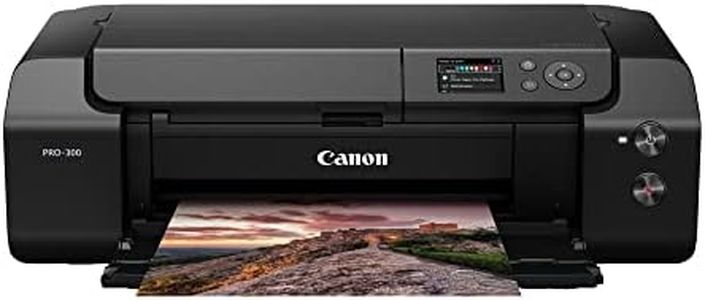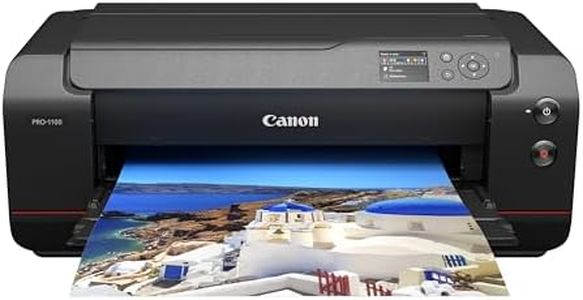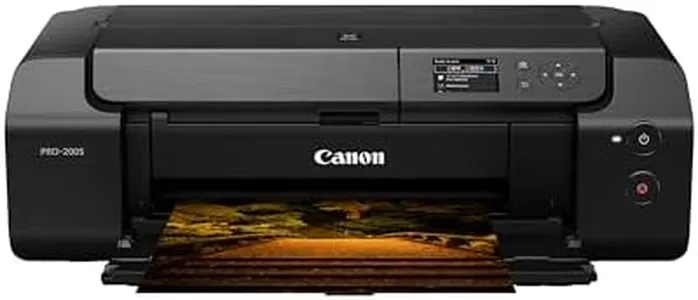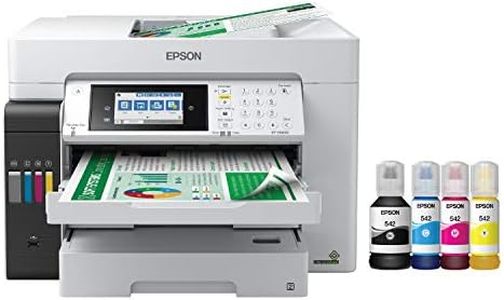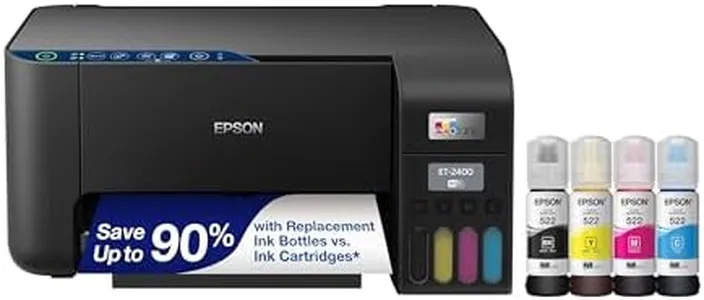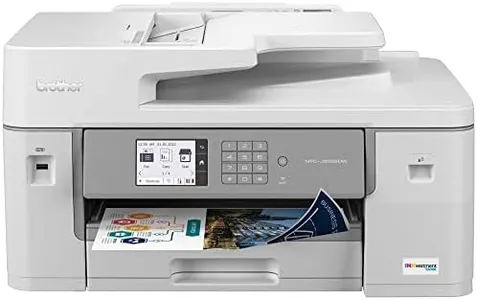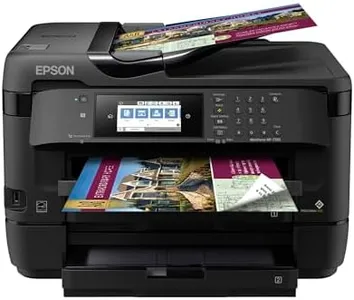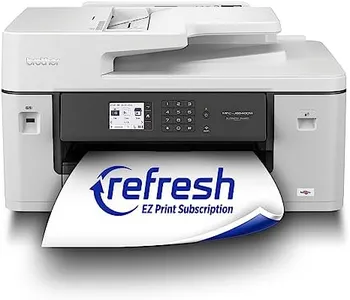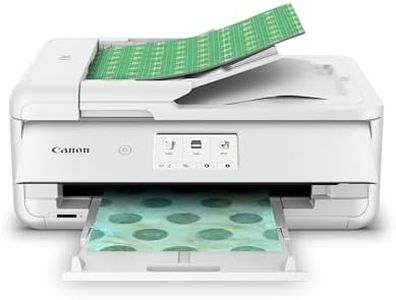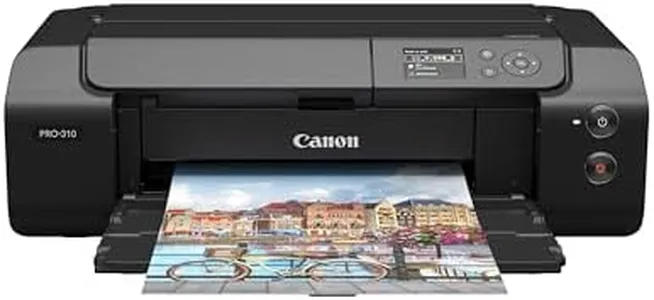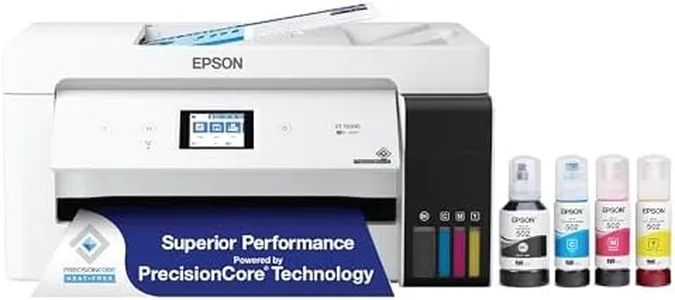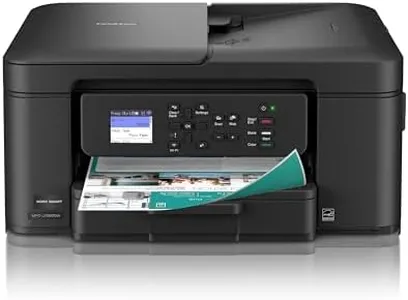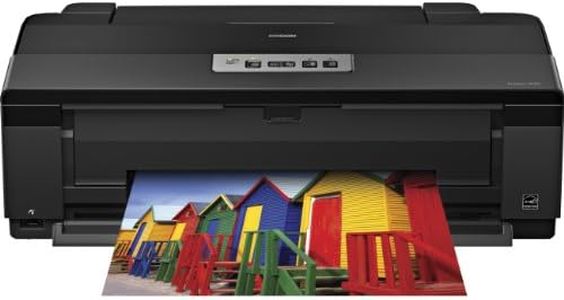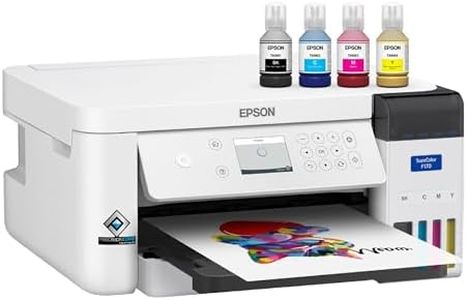10 Best 13 X 19 Printers 2025 in the United States
Our technology thoroughly searches through the online shopping world, reviewing hundreds of sites. We then process and analyze this information, updating in real-time to bring you the latest top-rated products. This way, you always get the best and most current options available.

Our Top Picks
Winner
Epson EcoTank Photo ET-8550 Wireless Wide-format Color All-in-One Supertank Printer with Scanner, Copier, Ethernet and 4.3-inch Color Touchscreen
Most important from
2061 reviews
The Epson EcoTank Photo ET-8550 is a versatile all-in-one printer designed for high-quality photo printing and various creative projects. Its standout feature is cartridge-free printing with six-color Claria ET Premium inks, ensuring vibrant colors and sharp text. The printer offers impressive media support, handling sizes up to 13 x 19 inches and even specialty media like cardstock and CDs/DVDs.
Users will appreciate the economical printing costs, with the potential to save significantly on ink and printing expenses in the long run. Each set of replacement inks lasts up to two years, significantly reducing the frequency and cost of refills. Connectivity is versatile with wireless options, Ethernet, and compatibility with mobile devices via the Epson Smart Panel app, making it easy to print, scan, and manage tasks remotely. The 4.3-inch color touchscreen adds convenience and ease of use, while voice-activated printing offers hands-free operation.
The printer's speed might be a drawback for some, with a maximum of 16 pages per minute (ppm) for monochrome and 12 ppm for color. Additionally, at 24.5 pounds, it is relatively heavy and may require a dedicated space. The initial cost might be higher than traditional printers, but the long-term savings on ink can justify the investment. The EcoTank Photo ET-8550 is ideal for users who prioritize high-quality photo printing, creative projects, and long-term cost efficiency over speed.
Most important from
2061 reviews
Canon imagePROGRAF PRO-300 Wireless Color Wide-Format Printer, Prints up to 13"X 19", 3.0" LCD Screen with Profession Print & Layout Software and Mobile Device Printing, Black, One Size
Most important from
410 reviews
The Canon imagePROGRAF PRO-300 is a versatile choice for photographers and artists who need a high-quality 13-x-19 printer. With its 9-color plus Chroma Optimizer ink system, it offers exceptional color accuracy and depth, making it suitable for professional-grade photo and fine art printing. The printer's maximum resolution ensures sharp and detailed prints, while its print speed is reasonable for its class, providing a good balance between quality and efficiency.
The inclusion of a 3.0” color LCD screen makes it user-friendly, allowing you to easily monitor ink levels and printer status. Connectivity options include Wi-Fi and USB, enabling printing from various devices such as smartphones, PCs, and laptops, which adds to its convenience. However, its relatively large footprint and weight might be a drawback for users with limited space.
The operating costs can be on the higher side due to the professional-grade ink system, which may not be ideal for high-volume printing needs on a budget. Despite these considerations, the Canon imagePROGRAF PRO-300 excels in delivering top-notch print quality, making it a valuable tool for serious photographers and artists who prioritize image quality and color fidelity.
Most important from
410 reviews
Canon imagePROGRAF PRO-1100: 17” Professional Wireless Inkjet Photo Printer
Most important from
40 reviews
The Canon imagePROGRAF PRO-1100 is a high-quality 17-inch photo printer designed for professional photographers and serious photo enthusiasts who want excellent color accuracy and print detail. It uses an advanced 11-pigment-based ink system, including a special Chroma Optimizer ink, to deliver rich colors, smooth glossiness, and improved scratch resistance. This contributes to vibrant, precise prints that faithfully reproduce subtle tones and dark areas, making it well-suited for fine art and photographic prints.
Print resolution is very sharp at 2400 x 1200 dpi for both color and black-and-white prints, ensuring crisp details. However, the print speed is quite slow—about one page per minute—which might be limiting if you need to produce large volumes quickly. The printer supports wireless and USB connections, allowing flexibility in how you send your files to print.
Paper handling is thorough, supporting a wide range of sizes up to 17” x 22”, including popular photo and art paper types. The air feeding system helps prevent paper jams and skewing, which is useful for maintaining print quality. The design is relatively large and heavy (83 pounds), so it needs a dedicated space. Operating costs might be on the higher side due to the pigment-based inks and multiple ink cartridges, but this is typical for professional photo printers that prioritize quality. The included professional print software and color management tools help optimize your workflow and ensure consistent results. This printer excels in delivering stunning image quality and color depth for professional photographic and fine art prints, though it is slower and bulkier than typical office printers. It is a solid choice if print quality is your top priority and you don’t need fast throughput.
Most important from
40 reviews
Buying Guide for the Best 13 X 19 Printers
Choosing the right 13x19 printer can be a bit overwhelming, but with the right guidance, you can find the perfect model that suits your needs. Whether you're a professional photographer, graphic designer, or just someone who needs to print large documents, understanding the key specifications will help you make an informed decision. Here are the main specs you should consider when selecting a 13x19 printer and how to navigate them.FAQ
Most Popular Categories Right Now

